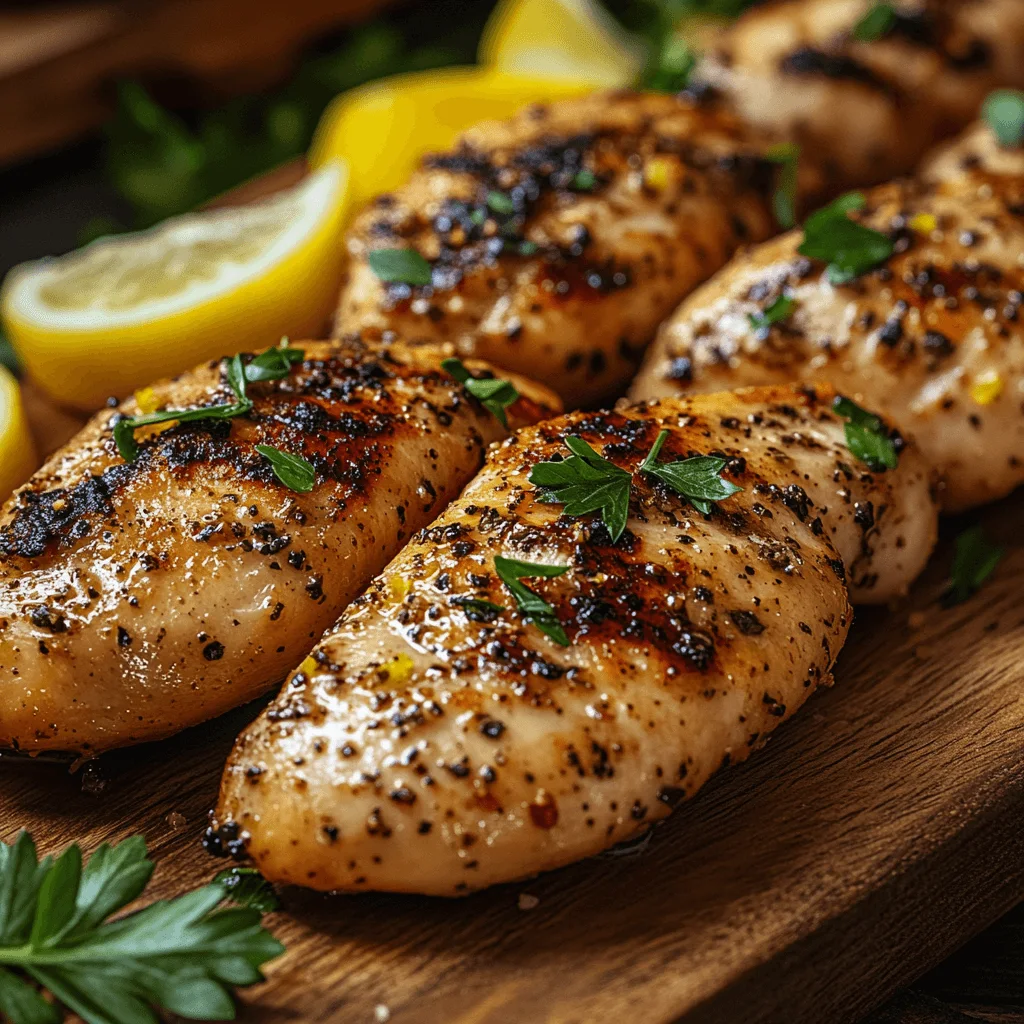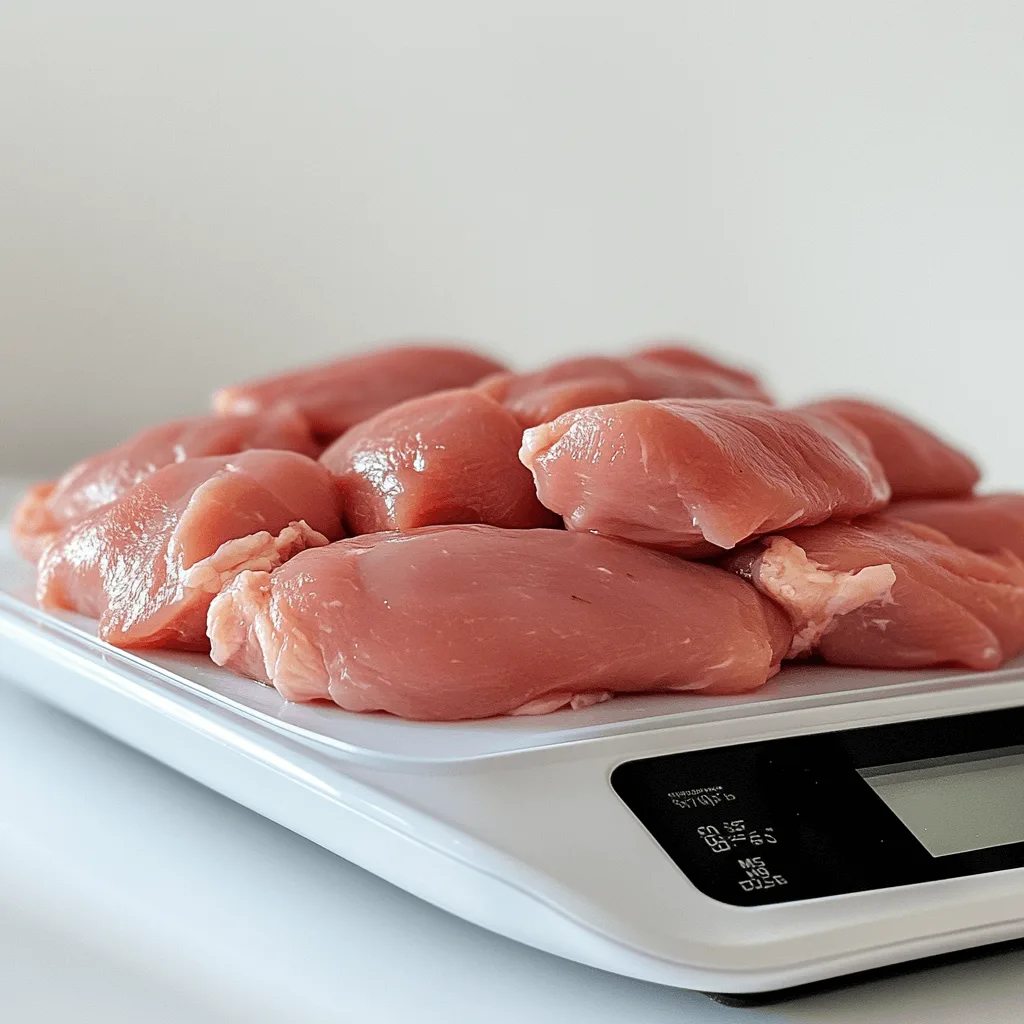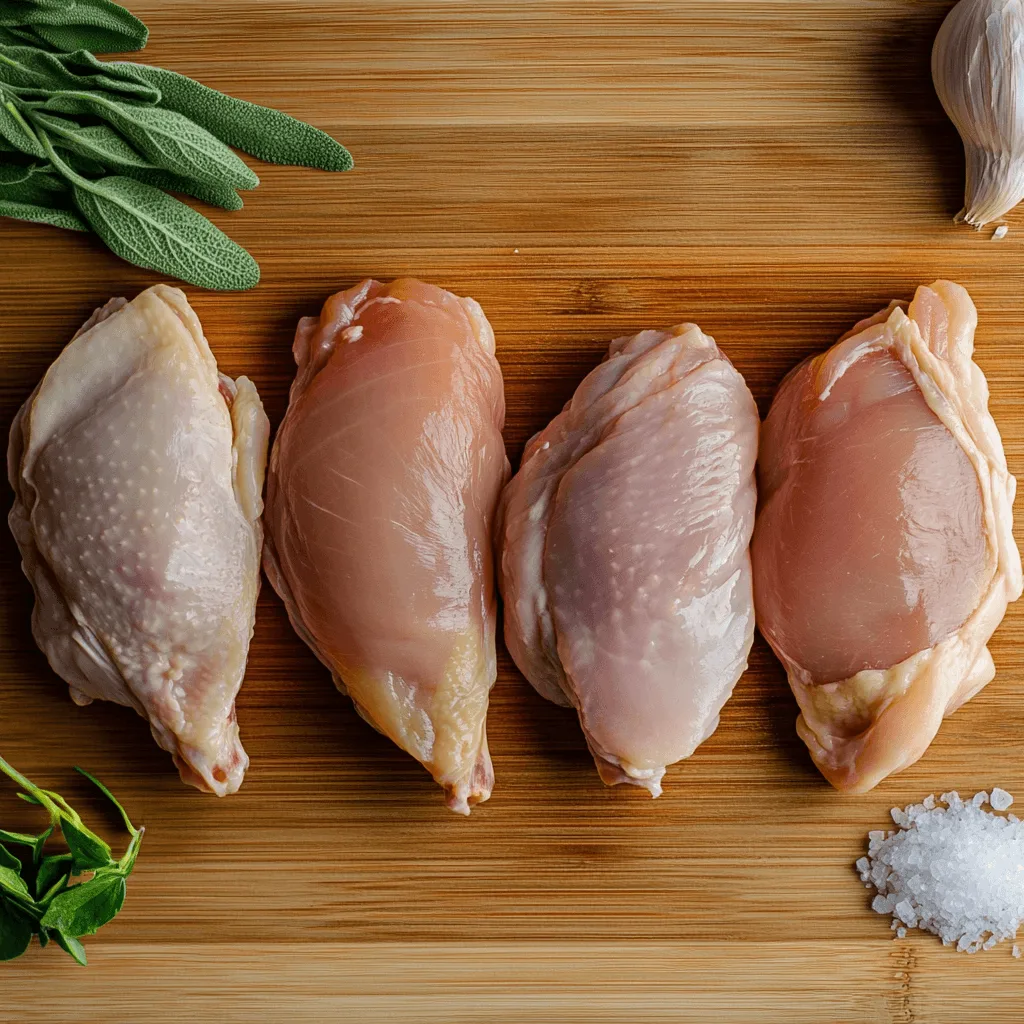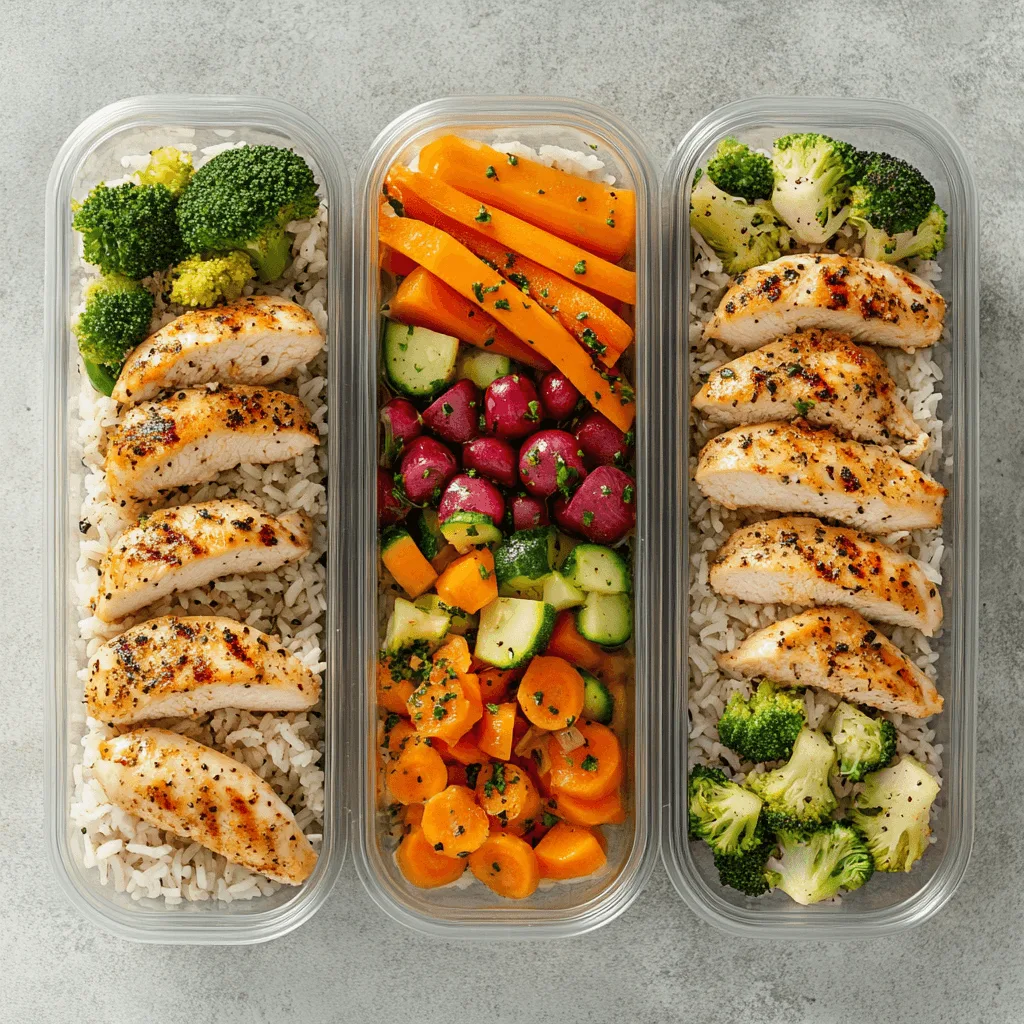When it comes to eating clean and watching your macros, chicken tenderloin calories become a hot topic. These lean, protein-rich strips of chicken are a go-to for athletes, fitness lovers, and anyone counting calories. But how many calories are in a chicken tenderloin? Does cooking method affect it? And how do they compare with other cuts like breasts or thighs? This article will guide you through everything—from raw values to cooked comparisons—helping you make smart meal decisions.

Learn more about the complete chicken tenderloin nutrition profile including vitamins, minerals, and protein content.
Table of Contents
Understanding Chicken Tenderloin Nutrition
What Is a Chicken Tenderloin?
Before diving into chicken tenderloin calories, it helps to know what part of the bird we’re dealing with. The chicken tenderloin is a small, thin strip of muscle located under the main portion of the chicken breast. It’s naturally tender, hence the name, and often used in grilling, baking, and low-fat meal prep.
Chicken tenderloins are different from regular chicken breasts. They cook faster, absorb flavors quickly, and contain slightly fewer calories per ounce. These characteristics make them ideal for high-protein, low-calorie diets.
Nutritional Overview of Chicken Tenderloins
Here’s a detailed look at the calories in chicken tenderloin servings in both raw and cooked forms:
| Serving Size | Calories | Protein | Fat | Carbs |
|---|---|---|---|---|
| 1 raw chicken tenderloin (45g) | ~74 | ~14g | 1g | 0g |
| 4 oz raw tenderloin | ~110 | ~22g | 1.5g | 0g |
| 3 cooked chicken tenderloins (~6 oz) | ~170–180 | ~32g | 2g | 0g |
These numbers show why chicken tenderloin calories are so appealing—low fat, high protein, and zero carbs. That’s ideal for anyone tracking macros or cutting calories.
Chicken tenderloins are also rich in B-vitamins, selenium, phosphorus, and other nutrients important for metabolism, muscle recovery, and immune health. So, when you focus on chicken tenderloin calories, you’re not just saving calories—you’re gaining nutritional value too.
These lean cuts deliver protein without excess fat—ideal for weight-loss diets and protein-forward meal plans like stir-fries.
Calories in a Single Chicken Tenderloin
How Many Calories Are in One Chicken Tenderloin (Raw & Cooked)?
If you’re watching your intake closely, knowing the calorie count of a single chicken tenderloin helps with precise tracking. On average, one raw chicken tenderloin (weighing about 45 grams) contains approximately 74 calories. This figure may vary slightly depending on the bird’s size and brand, but 74 is a solid estimate.

Once cooked, however, the calorie content can shift. Grilling or baking without added fat keeps it lean, raising the calorie total to around 85–90 calories per piece, as moisture is lost and protein becomes more concentrated.
Here’s a calorie comparison chart:
| Form | Weight | Calories |
|---|---|---|
| Raw chicken tenderloin | 45g (1 pc) | ~74 |
| Grilled chicken tenderloin | 45g | ~85–90 |
| Air-fried (no oil spray) | 45g | ~90 |
| Breaded and fried | 45g | ~140–180 |
Cooking methods like deep-frying can double the chicken tenderloin calories, especially when coated in breading or cooked in oil.
Size Variation and Impact on Calorie Count
Not all tenderloins are created equal. Depending on brand and cut, sizes range from 40g to 60g each. That means chicken tenderloin calories may vary from 65 to 100 per piece. The safest way to estimate is by weighing your chicken before cooking.
Here’s a quick calorie estimate by size:
| Size | Weight (g) | Estimated Calories |
|---|---|---|
| Small | 40g | ~65–70 |
| Medium | 45g | ~74–85 |
| Large | 60g | ~100 |
Another factor that influences calorie count is how long you cook the chicken. The longer it’s cooked (especially with dry methods like grilling), the more water it loses, slightly increasing the calorie density per gram.
So, if you want to track your chicken tenderloin calories accurately, always weigh raw portions, and avoid heavy oils, batters, or sauces. For best results, stick to dry cooking methods and natural seasoning.
Calories in 4 oz Chicken Breast Tenderloin
How Much Is 4 oz of Chicken Tenderloin?
A common serving size listed on nutrition labels is 4 ounces (roughly 112 grams), which typically equals about 2 to 3 average-sized chicken tenderloins. This portion is often used in meal plans, calorie calculators, and diet tracking apps because it’s easy to weigh and prepare.
When you’re cooking at home, a 4 oz portion usually looks like the palm of your hand or one medium-sized chicken breast tenderloin sliced in half. It’s also a recommended serving size for lean protein consumption by many health organizations.
Caloric Breakdown and Comparison to Other Cuts
So how many chicken tenderloin calories are in a 4 oz portion? Here’s a breakdown based on cooking method:
| Cooking Method | Calories per 4 oz | Protein | Fat | Carbs |
|---|---|---|---|---|
| Raw | ~110 | 23g | 1.5g | 0g |
| Grilled | ~125 | 25g | 1.5g | 0g |
| Baked (unseasoned) | ~120 | 24g | 2g | 0g |
| Pan-fried (in 1 tsp olive oil) | ~160 | 23g | 6g | 0g |
| Deep-fried (battered) | ~200–240 | 20g | 10g | 10g |
From this, it’s clear that while chicken tenderloin calories start off low in raw form, the cooking style can increase the total quite a bit—especially when fats or breading are added.
Let’s also compare it to other chicken parts in the same 4 oz portion:
| Cut | Calories |
|---|---|
| Chicken tenderloin (grilled) | ~125 |
| Chicken breast (skinless) | ~120 |
| Chicken thigh (skinless) | ~180 |
| Chicken wing (skinless) | ~210 |
The numbers reinforce why health-focused eaters often choose tenderloins—they’re just as filling but contain fewer calories and fat than thighs or wings. And because they’re smaller and quicker to cook, it’s easier to control portion sizes.
When you’re tracking your macros or counting calories for fat loss or muscle gain, 4 oz is a perfect, balanced protein serving—especially when it’s coming from lean chicken tenderloin calories.
Tip: Skip the deep fryer and try seasoning lightly with herbs or hot honey-style finishes like this recipe for flavor without excess fat.
Calories in 3 Chicken Breast Tenderloins
Average Size and Weight of 3 Tenderloins
If you’re prepping meals or logging your food in a fitness tracker, knowing the calories in 3 chicken breast tenderloins can save time and improve accuracy. On average, one chicken tenderloin weighs between 40g to 60g, depending on the brand or cut.
So, three chicken breast tenderloins usually weigh about 5.5 to 6.5 ounces (roughly 160g–180g). That’s slightly more than a standard 4 oz serving and provides a hefty dose of lean protein.
Want to visualize it? Imagine three fingers laid side-by-side—this is about the same surface area three tenderloins cover. Depending on your cooking method, those three pieces can offer anywhere from 165 to 240 chicken tenderloin calories.
Total Calorie Count: Raw vs Cooked
Here’s a helpful breakdown to estimate how many chicken tenderloin calories are in 3 pieces:
| Form | Weight | Calories |
|---|---|---|
| Raw (160g total) | ~5.6 oz | ~165 |
| Grilled (160g cooked) | ~5 oz | ~185 |
| Baked (unseasoned) | ~5 oz | ~180 |
| Pan-fried in olive oil | ~5 oz | ~225 |
| Deep-fried, breaded | ~5 oz | ~240–260 |
Note: Cooked weight is always less due to moisture loss, but chicken tenderloin calories per gram increase slightly because it becomes more dense.
The great thing about chicken tenderloins is you get more volume with fewer calories. Three pieces give you a satisfying portion without the bulk or excess fat that comes with dark meat.
Need to hit your protein macros without blowing your calorie budget? Three chicken tenderloins are a smart, efficient way to do it. Plus, they’re easy to portion and prep in bulk, whether you’re meal-prepping for the week or cooking for the family.
So when you’re aiming to stay within your calorie goals, knowing the chicken tenderloin calories in 3 pieces helps you stay on track without second-guessing your servings.
Why Chicken Tenderloin Is Low in Calories
Lean Meat Profile and Low Fat Content
One of the key reasons why chicken tenderloin calories stay so low is its natural leanness. Chicken tenderloin comes from the underside of the breast and is made up almost entirely of lean white meat. Unlike darker cuts like thighs or drumsticks, tenderloins contain very little fat—usually less than 2 grams per 4-ounce serving.

That low-fat content translates directly into fewer calories. Remember, fat contains 9 calories per gram, while protein has only 4. So when you consume chicken tenderloin, you’re mostly getting protein without the added caloric load of fat.
Here’s a calorie comparison of chicken cuts per 100g (about 3.5 oz):
| Chicken Cut | Calories | Fat (g) | Protein (g) |
|---|---|---|---|
| Chicken Tenderloin | ~110 | ~1.5g | ~22g |
| Chicken Breast | ~120 | ~2g | ~23g |
| Chicken Thigh (skinless) | ~180 | ~9g | ~20g |
| Chicken Wing (skinless) | ~210 | ~14g | ~19g |
As you can see, chicken tenderloin calories are significantly lower than dark meat options—thanks in large part to their minimal fat and zero-carb composition.
With virtually no carbs and minimal fat, chicken tenderloins are perfect for fat loss, especially when paired with low-fat sides like those in Aldi’s chicken salad options.
Cooking Methods That Preserve Low-Calorie Value
Another reason chicken tenderloin calories remain low is their flexibility with clean cooking methods. Because tenderloins are so lean, they cook quickly and don’t require added fat or oil for flavor or tenderness. This means you can:
- Grill them without oil
- Bake with minimal seasoning
- Air-fry them using zero-calorie spray
- Poach or boil in broth for zero added fat
Here’s a breakdown of how much oil can add to chicken tenderloin calories:
| Cooking Add-On | Added Calories |
|---|---|
| 1 tsp olive oil | +40 |
| 1 tbsp butter | +100 |
| 1/2 cup bread crumbs | +150 |
So while the base calorie count of tenderloins is low, additions like sauces, breading, or excess oil can quickly double your intake.
To preserve the benefits of low chicken tenderloin calories, opt for herbs, citrus juices, mustard, or light seasoning blends instead of heavy sauces or frying.
When eaten plain or with minimal additions, chicken tenderloin remains one of the most calorie-efficient protein sources available, perfect for cutting, bulking cleanly, or managing weight long term.
Comparing Chicken Tenderloin to Other Chicken Cuts
Chicken Tenderloin vs Chicken Breast: Calorie Comparison
Chicken breast and chicken tenderloin are often confused because they come from similar parts of the bird and look alike. However, even though they’re both lean cuts, there are subtle differences when it comes to chicken tenderloin calories.
| Cut | Serving Size | Calories | Protein | Fat |
|---|---|---|---|---|
| Chicken Tenderloin | 4 oz (112g) | ~110 | 22g | 1.5g |
| Chicken Breast (skinless) | 4 oz (112g) | ~120 | 23g | 2g |
Tenderloins are slightly lower in calories and fat, though not dramatically so. The real difference comes in texture and cook time. Tenderloins are smaller and more tender, while breasts can be denser and drier if overcooked.
So while both are excellent choices for lean protein, chicken tenderloin calories give you a minor edge if you’re strict on your macro or calorie count.
Chicken Tenderloin vs Thighs and Wings
Now, when you compare chicken tenderloins to darker cuts like thighs or wings, the differences in calories and fat become much more noticeable.
| Cut | Serving Size | Calories | Fat | Protein |
|---|---|---|---|---|
| Chicken Tenderloin | 4 oz | ~110 | 1.5g | 22g |
| Chicken Thigh (no skin) | 4 oz | ~180 | 9g | 20g |
| Chicken Wing (no skin) | 4 oz | ~210 | 14g | 19g |
Clearly, tenderloins win when it comes to low-fat, low-calorie content. Thighs and wings may be more flavorful due to higher fat, but they’re not ideal for those trying to lose weight or eat clean.
In fact, wings can double the chicken tenderloin calories in the same serving size. If you’re following a weight-loss meal plan or macro-based diet, switching from wings to tenderloins could save you hundreds of calories each week.
Tenderloins are also more versatile. Their neutral flavor makes them perfect for seasoning in a variety of styles—from spicy Cajun rubs to lemon herb marinades—without relying on calorie-heavy sauces.
So whether you’re cooking for performance, health, or taste, comparing chicken tenderloin calories to other cuts helps you choose the option that fits your goals best.
Cooking Methods and Their Caloric Impact
Grilled, Baked, Air-Fried, and Pan-Fried Tenderloins
You’ve picked lean meat, but the way you cook it can make or break your calorie goals. While the raw count of chicken tenderloin calories is already low, cooking adds or subtracts depending on the method.
Let’s compare the most popular cooking styles:
| Cooking Method | Calories (Per 4 oz) | Notes |
|---|---|---|
| Grilled | 125 | Retains moisture, adds smoky flavor without fat |
| Baked (no oil) | 120 | Even cooking, low fat |
| Air-Fried (no breading) | 130 | Crisp exterior, minimal oil required |
| Pan-Fried (1 tsp olive oil) | 160 | Oil increases calorie count |
| Breaded & Deep-Fried | 220–250 | Major calorie spike from breading and oil |
Chicken tenderloin calories stay low when you keep things simple—think dry rubs, herbs, and zero-calorie sprays. Pan-frying or deep-frying can double the calories with minimal increase in satisfaction or protein.
Here’s how that breaks down for meal prepping:
| Prep Style | Serving Size | Calories | Fat |
|---|---|---|---|
| Grilled Tenders | 3 pieces | ~180 | 2g |
| Baked with Seasoning | 3 pieces | ~175 | 2.5g |
| Fried with Breading | 3 pieces | ~260 | 12g |
Oils, Marinades, and Coatings: What Adds Calories?
Even if you use a lean cut, it’s easy to load on hidden calories through oils and sauces. One tablespoon of olive oil alone adds 120 calories—that’s more than the tenderloin itself!
Here’s what commonly used cooking additions can do to your calorie count:
| Additive | Amount | Extra Calories |
|---|---|---|
| Olive Oil | 1 tbsp | +120 |
| BBQ Sauce | 2 tbsp | +70–100 |
| Creamy Marinades | 1/4 cup | +150–200 |
| Bread Crumbs | 1/2 cup | +150 |
So, while chicken tenderloin calories start off low, just a drizzle or dip can sneak in big numbers. Always read labels or make your own light marinades using lemon juice, vinegar, garlic, mustard, and herbs.
The takeaway? Stick to air-fried, grilled, or baked versions. Be mindful of toppings and extras, and you’ll keep the chicken tenderloin calories working in your favor.
Chicken Tenderloin in Meal Planning
Ideal for Weight Loss and Fitness Diets
When you’re trying to lose weight or gain muscle while staying lean, managing your calorie intake is non-negotiable. That’s where the low chicken tenderloin calories truly shine. High in protein and low in fat, chicken tenderloins help you feel full without packing on extra calories—a win for cutting diets, macro-based plans, and general clean eating.

Here’s why they’re a meal-prep favorite:
- Low Calorie, High Protein: A 4 oz portion offers ~110–120 calories and ~22–25g protein.
- Zero Carbs: Great for keto or low-carb meal plans.
- Lean Cut: Less fat than thighs or wings, reducing total calorie impact.
- Quick Cook Time: Ideal for batch-prepping multiple meals in under 30 minutes.
Check out this simple 3-day weight loss meal prep using chicken tenderloin:
| Day | Meal | Calories | Protein | Cooking Method |
|---|---|---|---|---|
| 1 | Grilled tenders + broccoli | 250 | 28g | Grilled |
| 2 | Chicken salad with olive oil | 320 | 26g | Baked |
| 3 | Stir-fry tenderloins + veggies | 300 | 24g | Air-fried |
High Protein, Low-Calorie Recipes
Below are three easy recipes built around chicken tenderloin calories and macro-friendly prep:
1. Lemon Garlic Grilled Chicken Tenderloins
- 4 oz chicken tenderloin
- 1 tbsp lemon juice, garlic, rosemary
- Calories: 125 | Protein: 24g | Fat: 1.5g
2. Air-Fried Spicy Chicken Strips
- 3 tenderloins with paprika, cayenne, salt
- Spray with avocado oil (minimal)
- Calories: 180 | Protein: 30g | Fat: 3g
3. Chicken Veggie Stir-Fry
- 5 oz sliced tenderloin, broccoli, peppers
- 1 tsp soy sauce, 1 tsp sesame oil
- Calories: 280 | Protein: 33g | Fat: 6g
Whether you’re hitting the gym, losing weight, or managing blood sugar, chicken tenderloins make a perfect protein source. With accurate tracking of chicken tenderloin calories, you can create filling meals that align with your nutritional goals and still taste great.
Storing and Measuring Chicken Tenderloin for Accuracy
Best Practices for Portion Control
Accurately tracking chicken tenderloin calories begins with proper measurement. Whether you’re using a food scale or estimating by hand, a little planning goes a long way in sticking to your health goals.
Here are essential tips:
- Weigh Raw, Not Cooked: Always weigh chicken tenderloins before cooking. Moisture loss during cooking alters the weight but not the calorie count.
- Use a Digital Scale: For precise calorie tracking, weigh each tenderloin in grams or ounces.
- Standard Portion: One chicken tenderloin typically weighs between 40g to 60g. Three tenderloins equal about 6 oz (~170g).
| Portion Type | Raw Weight | Calories (approx.) |
|---|---|---|
| 1 tenderloin | 45g | ~74 |
| 3 tenderloins | 135g | ~165–180 |
| 4 oz portion | 112g | ~110 |
Remember: even a 10g difference can shift chicken tenderloin calories by 15–20 calories. Over multiple meals per week, that adds up.
Weighing Before vs After Cooking
Weighing cooked chicken is less accurate unless you already know how much water was lost. A general rule: cooked chicken weighs 25% less than raw, but calorie content remains the same.
| Raw Weight | Estimated Cooked Weight | Calories (unchanged) |
|---|---|---|
| 4 oz | ~3 oz | ~110–120 |
| 6 oz | ~4.5 oz | ~165–180 |
So if you forget to weigh your chicken tenderloin raw, you can still calculate calories by adjusting for the loss.
Storage Tips to Preserve Nutritional Value
- Refrigerate raw tenderloins: Use within 2 days, or freeze immediately for up to 9 months.
- Cooked tenderloins: Store in airtight containers for up to 4 days in the fridge.
- Avoid re-freezing thawed chicken: It affects texture and may slightly impact chicken tenderloin calories due to moisture and nutrient loss.
Proper storage ensures your meals are both healthy and consistent in calorie content. That way, each bite of your chicken tenderloin delivers what your tracker expects—clean, reliable protein with no surprises.
Follow Easy Protein Kitchen on Pinterest for crave-worthy recipes, next-level chicken ideas, and flavor hacks that make every meal unforgettable.
Conclusion: Why Chicken Tenderloin Calories Matter
When it comes to healthy eating, portion control, and macro tracking, chicken tenderloin calories provide a clear advantage. They’re lean, versatile, quick to cook, and easy to track—whether you’re grilling, air-frying, or baking. By understanding how cooking methods, portion sizes, and meal additions affect the final calorie count, you can build meals that taste great and support your fitness or weight loss goals.
Chicken tenderloins aren’t just low in calories—they’re high in value for any nutrition-conscious kitchen. Make them a part of your weekly routine, and you’ll enjoy both taste and results.
FAQs About Chicken Tenderloin Calories
How many calories are in a single chicken tenderloin?
A single raw chicken tenderloin, which weighs about 45 grams, contains approximately 74 calories. If grilled or baked without added oil, the total rises to around 85–90 calories due to moisture loss and concentration of nutrients.
How many calories are in a 4 oz chicken breast tenderloin?
A 4-ounce (112g) portion of raw chicken tenderloin contains about 110–120 calories, depending on the brand and fat content. When grilled or baked, it may be closer to 125 calories due to water loss during cooking.
How many calories are in 3 chicken breast tenderloins?
Three average-sized chicken breast tenderloins usually weigh between 5.5 to 6.5 ounces. This means you can expect approximately 170–180 chicken tenderloin calories when grilled, and more if fried or breaded.
Why is chicken tenderloin so low in calories?
Chicken tenderloins are made up almost entirely of lean white meat, with minimal fat and zero carbs. This makes them a low-calorie, high-protein option that fits well into most healthy diets.
